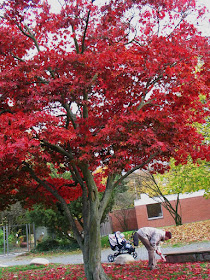 |
| Eudicots |
The eudicots, class Eudicotyledones (literally “true dicots”), are descended from a common ancestor and comprise three-quarters of all flowering plants. It is one of the two main classes of the angiosperms, the other being the monocots, or Monocotyledones.
Eudicots, the common name used for class Eudicotyledones, are the most common group of flowering plants, comprising 75 percent of all angiosperms. The other 25 percent, monocots (Monocotyledones), are often characterized by pollen grains that have a single aperture (or line of weakness).
Eudicots have pollen grains that typically possess three apertures, referred to as triaperturate pollen. Thus, there is no monocot-dicot division among the flowering plants.
  |
Whereas “monocot” remains a useful term, “dicot” does not represent a clade (a collection of organisms which have a single common ancestor) and should no longer be used. It is more useful to refer to eudicots, which represent a well-defined clade of angiosperms.
Previously, the angiosperms were divided into two major groups, traditionally recognized as classes: the dicots (short for dicotyledons, class Magnoliopsida) and the monocots (monocotyledons, class Liliopsida).
Dicots have been distinguished from monocots by several morphological (external physical) and anatomical features, but all of these were subject to exception. For example, most dicots possess two seedling leaves, or cotyledons, and typically have net-veined leaves; monocots, in contrast, usually have one cotyledon and leaves with parallel venation.
The monocot-dicot division was recognized as early as the nineteenth century. However, later studies of phylogeny (the evolutionary history of a group of organisms) have demonstrated that this split does not reflect the evolutionary history of angiosperms.
Phylogenetic trees (which are visual representations of the evolution of a group of organisms) showing historical relationships have been constructed based on deoxyribonucleic acid (DNA) sequences, as well as morphological, chemical, and other characteristics. These trees indicate that whereas the monocots form a clade, all dicots do not forma distinct group.
The monocots appear among the groups of early-diverging (or early evolving) lineages of angiosperms, all of which have traditionally been considered dicots. All early branches of the angiosperm phylogenetic tree, including the monocots, are best referred to informally as basal angiosperms.
 |
| angiosperms |
Importantly, the eudicots represent only a subset of the formerly recognized group dicots. Many basal angiosperms are traditional dicots but are not eudicots. Thus, there is no monocot-dicot split in the angiosperms.
Whereas “monocot” remains a useful term, “dicot” does not represent a clade (a collection of organisms which have a single common ancestor) and should no longer be used. It is more useful to refer to eudicots, which represent a well-marked clade of flowering plants.
Classification
The eudicots contain 75 percent of all angiosperms, or about 165,000 species distributed among roughly 300 families. The eudicots include all the familiar angiosperm trees and shrubs and many herbaceous groups.
Some of the larger, better known families of eudicots include Rosaceae (rose family), Fabaceae (bean family), Brassicaceae (mustard family), Ranunculaceae (buttercup family), Apiaceae (parsley family), Asteraceae (sunflower family), and Lamiaceae (mint family).
The eudicots include many familiar trees, such as those of the Fagaceae (oak or beech family), Betulaceae (birch family), Juglandaceae (walnut or hickory family), Aceraceae (maple family), and Platanaceae (plane tree or sycamore family).
A good understanding of the major groups of eudicots has emerged from the use of DNA sequence data. The early-diverging eudicots consist of a number of ancient lineages, including Ranunculales, a group containing the Ranunculaceae and Papaveraceae (poppy family). Other early-diverging eudicots include Buxaceae (boxwood family) and Proteales; the latter includes the Platanaceae and Proteaceae (sycamore and protea families).
 |
| Palmatum Aceraceae |
Following the early-diverging eudicots is a large clade, referred to as the core eudicots, that contains most eucidots. The core eudicots consist of three major clades (rosids, asterids, and Caryophyllales) and several smaller ones (Santalales, Saxifragales, and Gunnerales).
The rosids and asterids are very large groups, each containing roughly one-third of all angiosperms. Traditional classifications, such as presented by botanist Arthur Cronquist in 1981, do not reflect modern views of phylogenetic relationships.
For comparison, the rosid clade now recognized is made up of members of the traditional subclasses Rosidae, Dilleniidae, and Asteridae (in the sense of Cronquist, 1981); the asterid clade contains members of subclasses Asteridae, Dilleniidae, and Rosidae; and Caryophyllales contains taxa previously placed in Caropyllidae and Dilleniidae.
Relationships among the core eudicots are still unclear, despite intensive study using DNA sequence data. The difficulty in clearly describing relationships among these groups appears to stem from the fact that following the origin and initial diversification of the eudicots, a rapid radiation (evolution of many organisms in a short period of time) occurred, yielding the groups of core eudicots seen today.
   |
Evolution
The eudicots can be easily identified in the fossil record by their three-grooved pollen; they appeared in the fossil record as early as 110 million years ago. Prominent early fossil eudicots include Platanaceae.
Following the origin of the eudicots, the fossil record also suggests a rapid diversification; by 90 to 80 million years ago, many of today’s prominent families were established and are clearly recognizable in the fossil record. Thus, the fossil evidence suggesting a rapid radiation of eudicots agrees with the phylogeny obtained using gene sequence data.
Economic Uses
Outside the grasses, such as wheat, corn, and rice (all in the monocot family Poaceae), most plants of economic importance are eudicots. Examples of economically important eudicot families include members of the bean or legume family (Fabaceae), such as soybean, lentils, and green beans; and the sunflower family (Asteracae), which includes sunflowers, lettuce, and artichokes.
The mustard family (Brassicaceae) contains numerous members of economic importance, including cabbage, kale, cauliflower, mustard, and horseradish. The rose family (Rosaceae) provides fruits such as strawberries, raspberries, apples, cherries, peaches, and plums as well as numerous ornamentals. The family Solanaceae is the source of tomatoes and potatoes.
Most familiar horticultural plants are also eudicots. They include a diverse array of trees, shrubs, and annual and perennial herbs.
Horticulturally important eudicots include begonias (Begoniaceae), dogwoods (Cornaceae), rhododendrons and heaths (Ericaceae), numerous members of the Asteraceae including sunflower, asters, chrysanthemums, and marigolds; and numerous representatives of Ranunculaceae such as columbine, buttercups, and monkshood. Some other families that contain ornamental plants include the cactus family (Cactacae), the geranium family (Geraniaceae), and members of the mint family (Lamiaceae).
Because 75 percent of all flowering plants are eudicots, they are extremely diverse in ecology and morphology. The eudicots are also diverse in habit (pattern of growth) and include annual and perennial herbs, shrubs, and trees. In size, they range from the smallest terrestrial angiosperms, plants 1 centimeter in height (Lepuropetalon, Parnassiaceae), to eucalyptus trees well over 100 meters.
Flowers are also highly diverse in structure, form, and size across the eudicots. The smallest eudicot flowers are those of Lepuropetalon,which are less than 1 millimeter in diameter; the largest eudicot flowers are more than 0.3 meter (1 foot) in length.